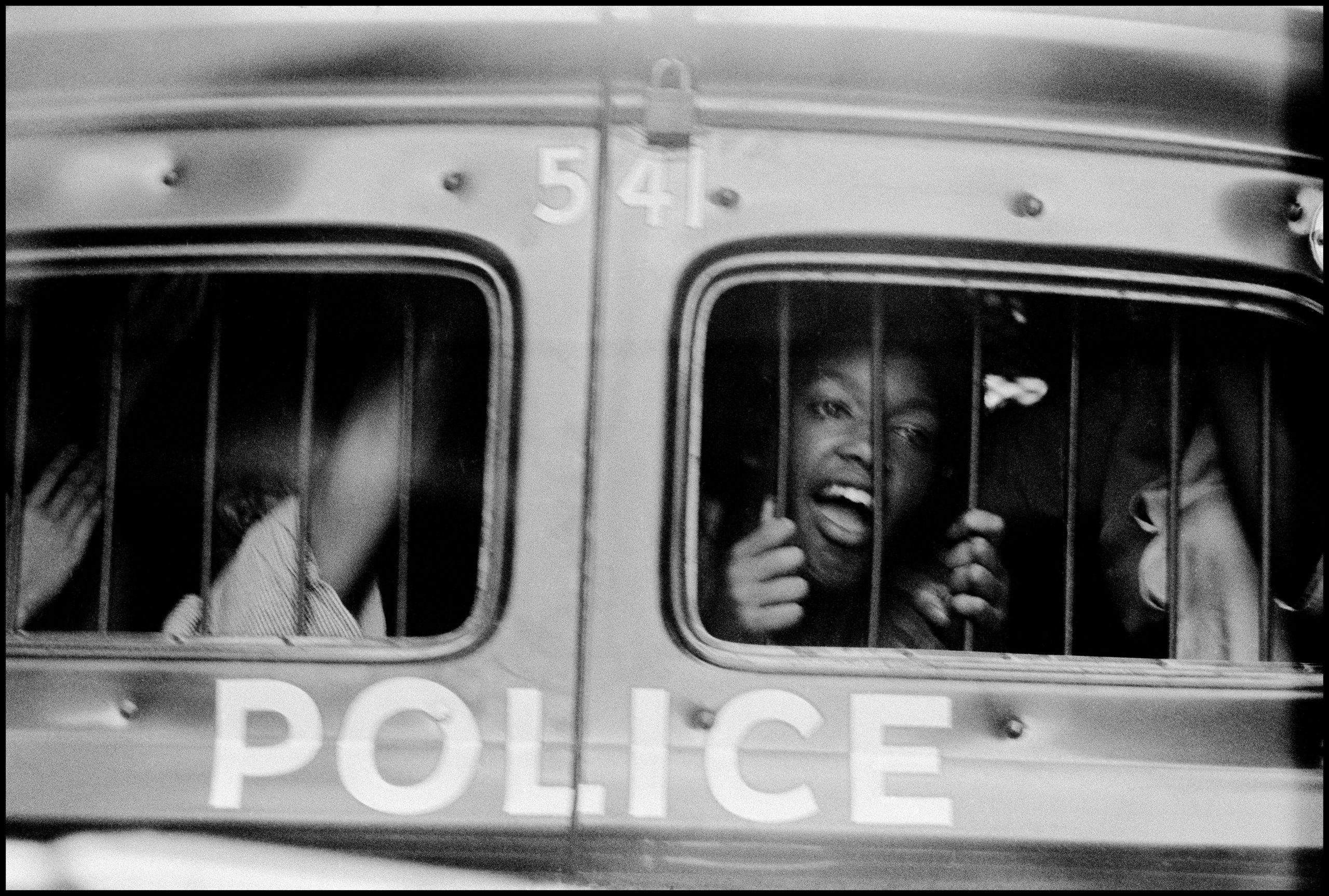Police Power: Enforcing Racial Segregation
Scroll for morePolice who failed to protect Black people from violence instead used brutal force against peaceful protestors.
During the Civil Rights Movement, law enforcement routinely failed to protect Black citizens from harassment, attacks, shootings, and bombings. At the same time, police enforced segregation laws and defended racial inequality by arresting and imprisoning peaceful protestors, labeling them “lawbreakers.” By criminalizing civil rights activists, opponents of civil rights shifted the public debate from segregation to crime, denounced the fight against racial discrimination as a breakdown of law and order, and enabled the abusive and sometimes deadly use of police power against civil rights activists.

Photo: Danny Lyon/Magnum Photo
As a movement leader, Dr. Martin Luther King Jr. was routinely targeted by Southern law enforcement and was arrested, jailed, and fined more than 25 times from the start of the Montgomery Bus Boycott until his 1968 assassination. Unfortunately, Dr. King was not alone, as countless activists were targeted by law enforcement for their work toward racial equality.
Willis McCall, sheriff of Lake County, Florida, was infamous for his violent defense of segregation. In 1951, he shot Samuel Shepherd and Walter Irving, two Black men in handcuffs, while returning them to jail for a retrial. Irving survived the attack and told the FBI that McCall had shot both men in cold blood, but McCall claimed self defense and was never charged. In 1972, after McCall kicked to death an intellectually disabled Black man in his custody, he almost won an eighth term, and an all-white jury acquitted him of all charges.
In Birmingham, Alabama, Commissioner of Public Safety Eugene “Bull” Connor purposely permitted an interracial group of Freedom Riders to be brutally attacked in 1961, promising a local white mob that “15 or 20 minutes would elapse before the police arrived.” He retained his post and two years later, on May 2, 1963, television audiences around the world watched Connor command police to attack Black children protesting racial segregation in Birmingham. The youth were attacked with police dogs, clubs, and high- power fire hoses; hundreds were arrested and transported to jail in school buses and paddy wagons.
On March 7, 1965, a day later known as “Bloody Sunday,” Sheriff Jim Clark of Dallas County, Alabama, ordered forces to beat hundreds of peaceful protesters attempting to march from Selma to Montgomery to demand voting rights for Black Americans. Marchers were knocked to the ground, hit with sticks, and chased on horseback by officers swinging clubs, whips, and rubber tubing wrapped in barbed wire. Dozens of marchers were hospitalized with severe injuries and more than 750 were arrested.
McCall, Connor, Clark, and many other law enforcement officers were revered by segregationist officials, repeatedly re-elected by white constituents, and never renounced their views or actions. In an interview in 2006, a year before he died at the age of 84, Clark said he would “do the same thing today if [he] had to do it all over again.”

Officers drag two women to a waiting paddy wagon during a civil rights demonstration in Birmingham, Alabama, in 1963.
Photo: Getty Images/Charles Moore